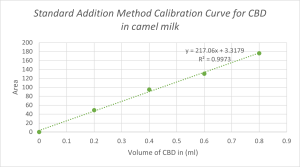
Findings on Factors Enhancing the Signal of Carbendazim in HPLC
This comprehensive report delves deeply into the intricate analysis of carbendazim (CRD), a commonly occurring benzimidazole compound found in a myriad of foods, ranging from milk to meat. The primary focus is to underscore the potential long-term toxicity of CRD to human health, necessitating a concerted effort in recognizing and managing its presence effectively. In light of this, various techniques have been developed for the detection of CRD, including immunoassay methods, electrochemical detector systems, solid-phase extraction (SPE), and high-performance liquid chromatography (HPLC). Among these methodologies, HPLC emerges as the preferred choice due to its unparalleled efficiency and accuracy in identifying CRD.
However, the detection of CRD at low levels poses a considerable challenge, often requiring multiple HPLC pretreatments to ensure precision. Consequently, this research aims to sharpen the focus on optimizing HPLC settings, with a particular emphasis on investigating adjustments such as altering pH levels and introducing different types of cyclodextrins. This meticulous exploration seeks to fine-tune the HPLC methodology for enhanced sensitivity and reliability in CRD detection.
Cyclodextrins, a key component of this study, are molecular structures formed by arranging sugar molecules into rings with varying diameters. The unique characteristic of these molecules lies in their ability to create drug/cyclodextrin (CD) inclusion complexes, wherein the non-polar substituents of drug molecules nestle within the CD cavity. This interaction significantly augments the solubility and stability of various drugs, including CRD, in aqueous solutions. As such, the study endeavors to pinpoint the optimal conditions for improving HPLC signals by conducting experiments that involve manipulating pH levels and incorporating different cyclodextrin varieties.
Expanding the lens, the research recognizes the broader significance of its findings in the context of sustainable and inclusive communities. In light of the implications of CRD on food safety, the study underscores the importance of ensuring that any advancements in detection methodologies are not only scientifically robust but also applicable across diverse communities in a sustainable and equitable manner. This holistic perspective aligns with the overarching goal of fostering resilient and inclusive communities where access to safe and healthy food is recognized as a fundamental right.
In conclusion, this in-depth exploration of CRD analysis, detection methodologies, and the quest for optimizing HPLC settings are integral components of a research endeavor that extends its impact beyond the laboratory. By incorporating considerations of sustainability and inclusivity, the study aims to make meaningful contributions to the fields of food safety, human health, and community well-being.
